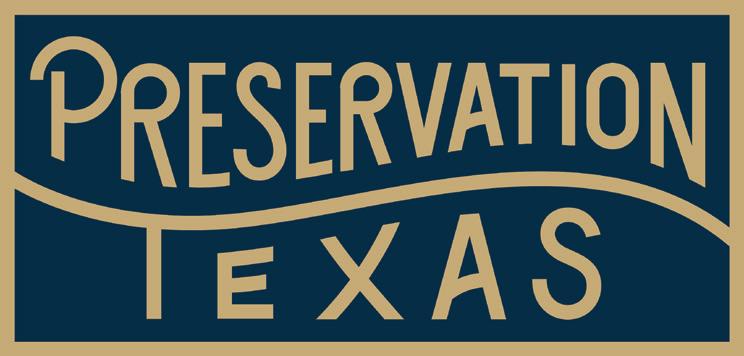
A ROADMAP TO THE 2036 TEXAS BICENTENNIAL
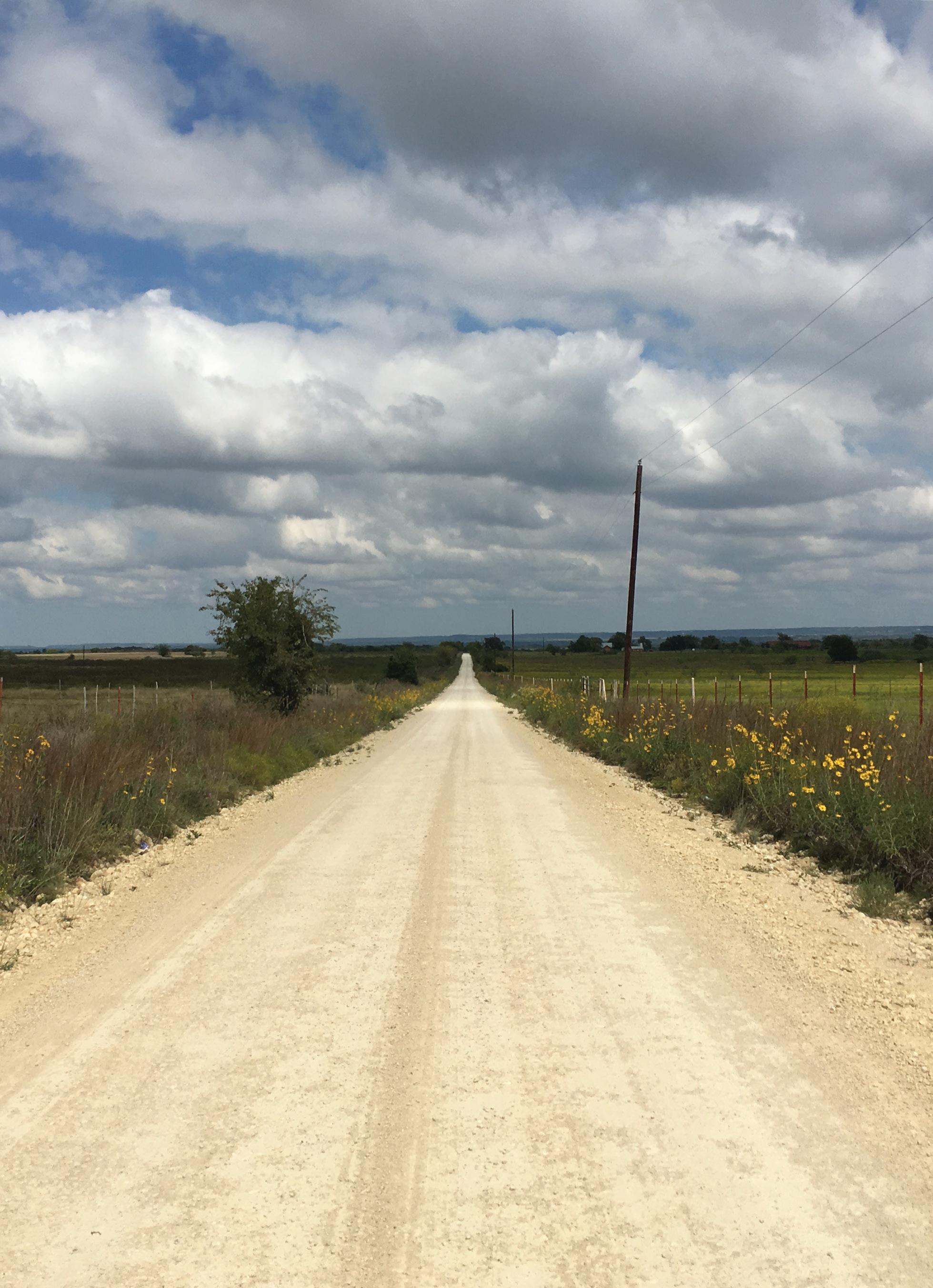
A STRATEGIC VISION FOR PRESERVATION TEXAS
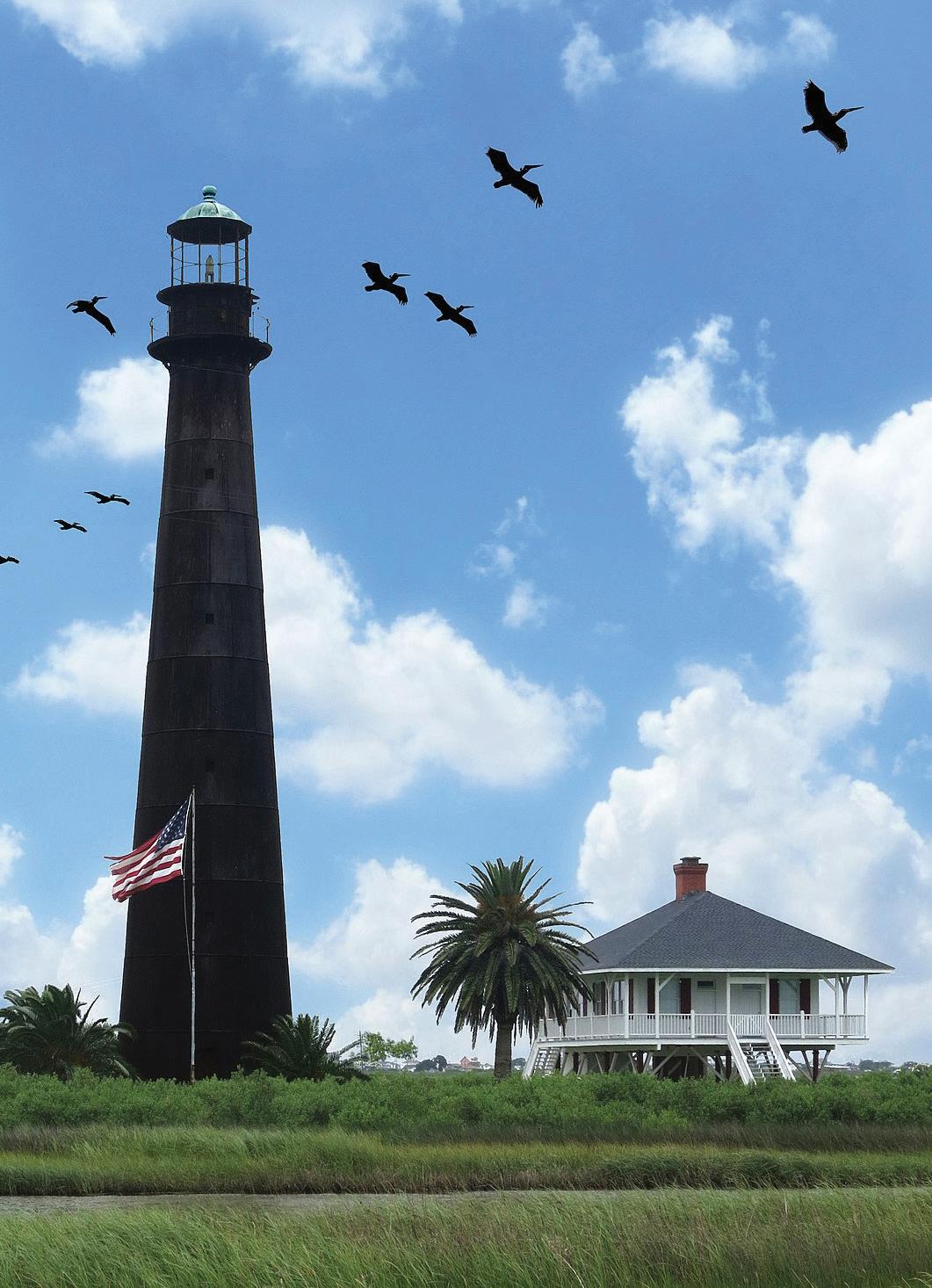


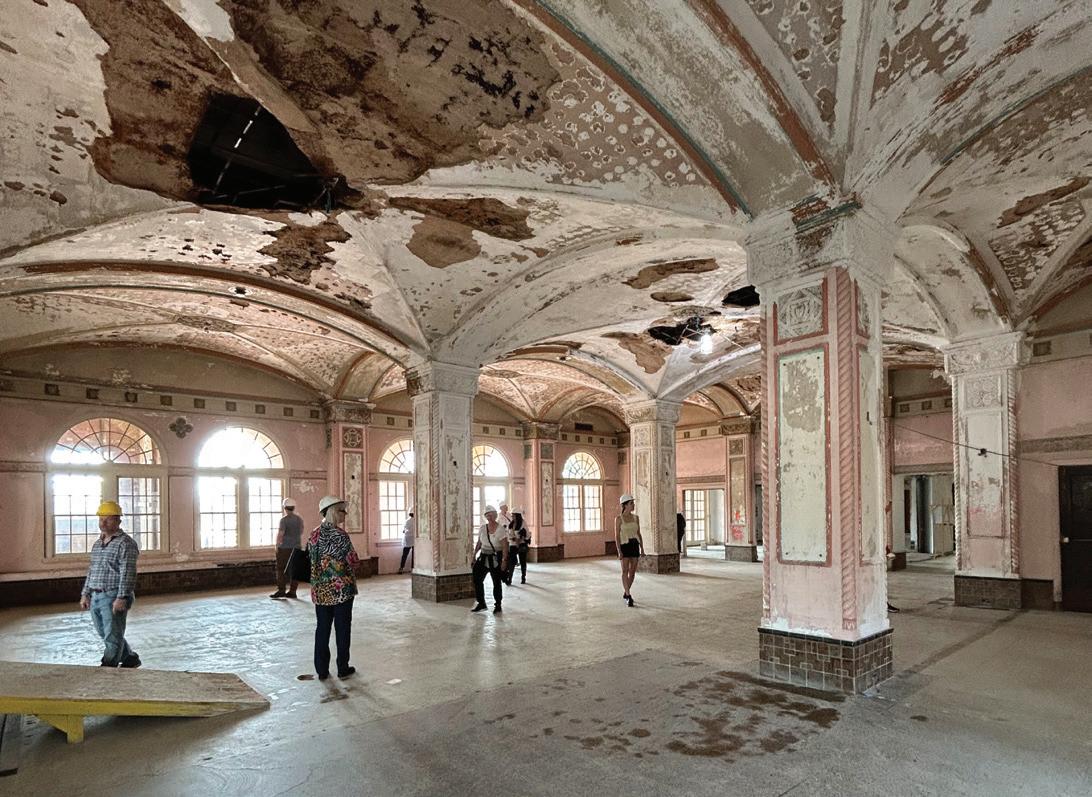
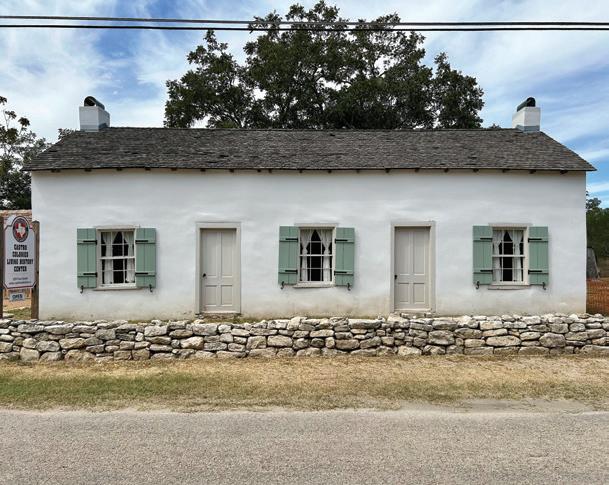
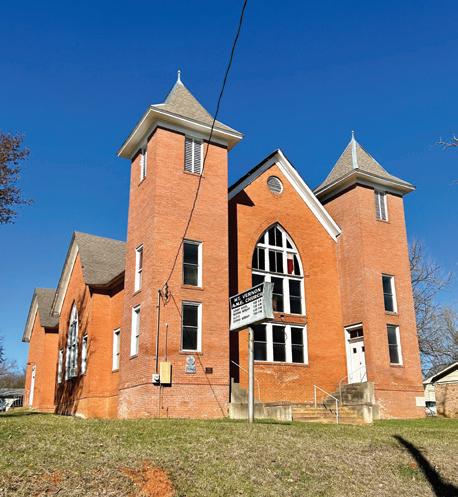
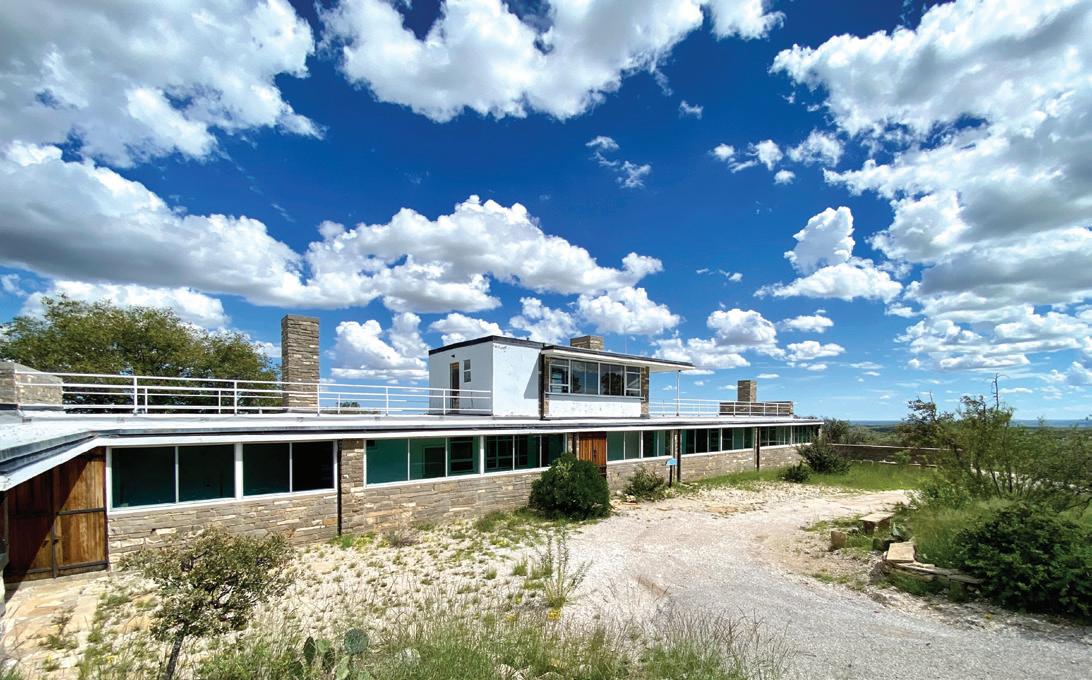

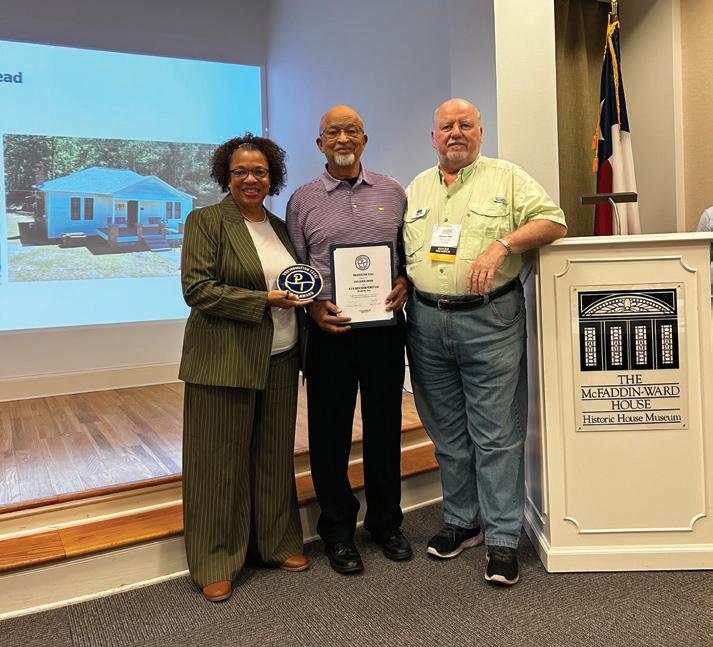
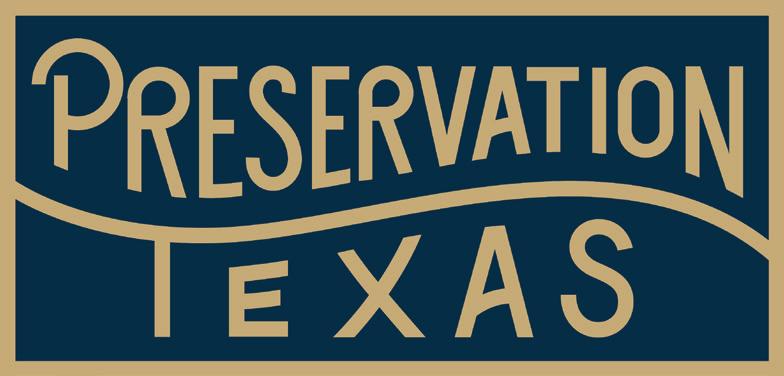













Fellow Texans,
We are pleased to share with you our vision for a future of Preservation Texas that is worthy of the scale and significance of our state's history, geography, diversity, and economy. Through the implementation of the five Strategic Directions outlined in this document, Preservation Texas will develop the professional and financial resources to empower Texans to protect our cultural heritage, while we embark upon our own restoration projects statewide.
As the 2036 Texas Bicentennial approaches, renewed public interest in our state's history will energize Texans to preserve the architectural and cultural evidence of our shared past. We will provide the private sector leadership and support that Texans need through innovative programs and initiatives, serving as a vital resource for information, advice, professional services, and stewardship.
While we recognize that the preservation field is continually evolving, we will remain focused on the preservation and protection of physical resources: buildings, cemeteries, cultural landscapes, and collections of Texas artifacts and artworks. This is a need that cannot and will not be met by other groups. Through focused advocacy, we will work to expand the incentives available for the preservation of privately-owned historic resources, create a voluntary conservation easement program, and offer training to expand the marketplace for preservation.
We have also taken notice of the struggles that many local, volunteer-driven groups are facing as demographic changes and aging constituencies take a toll on their ability to operate historic sites and care for their collections. Consequently, we will expand our organizational capacity to meet our obligation as the only statewide, nonprofit organization with a purpose to protect the physical evidence of our past. Through partnerships, mergers, and acquisitions, we can ensure that local historic resources will thrive as part of a strong, privately supported network of places, immune from the pressures of politics.
This is a bold strategy, but we believe that a strong and visionary Preservation Texas is essential to meet the challenges to protect and the opportunities to share the cultural heritage of Texas.
Sincerely,
 Willis Winters, FAIA
Willis Winters, FAIA
 Charles John, AIA
Charles John, AIA
 Evan Thompson President (2024) President (2022-2023) Executive Director
Evan Thompson President (2024) President (2022-2023) Executive Director

In approaching the development of our Strategic Vision, we were not interested in developing a document that would sit on a shelf. We sought to develop a set of Strategic Directions that reflected the actionable opportunities available to Preservation Texas to meet the need for a strong and effective statewide organization. We engaged Candace Tangorra Matelic, Ph.D., of CTM Professional Services, to guide this process by mentoring our staff, facilitating our board discussions, and sharing her decades of expertise grounded in real-world, practical approaches to strategic visioning.
To better understand the state of preservation in Texas, we benefited immensely from the wealth of detailed data about preservation needs and issues that had been compiled over the last year by the Texas Historical Commission. This data informed their own Statewide Historic Preservation Plan that is a requirement of the National Historic Preservation Act, but also enables groups like ours to understand the important role that a private sector organization can and should play.
We made reference to our own internal studies, including the comprehensive Revolving Fund Feasibility Study that we completed in 2020, prior organizational plans, community feedback from planning sessions for Bassett Farms Conservancy, and even the interesting and wideranging discussions among preservation leaders at the Texas Historical Foundation's Duda Forum in Dallas in October 2023.
Looking outward, we examined benchmarks for both statewide and regional preservation organizations across the country, including their operations, staffing, funding,


and activities. As a member of the National Preservation Partners Network, we had access to surveys conducted in 2020 and 2022 of peer organizations that provided additional insight. Recent planning documents published by preservation groups over the last several years in other states were carefully considered. We also explored successful models for sustainable revenue programs that have been adopted by preservation organizations large and small, not only in the United States but overseas as well.
We then reflected on the effectiveness of our own programs, noting their strengths while recognizing significant gaps and weaknesses that needed to be addressed across Texas. Our work with over 150 endangered historic places has given us unique insight into the struggles of preservation at a local level, and our more recent work with ten rural African-American places that are part of our National Park Service-funded grant program has only sharpened our focus to meet the needs of local groups in all areas of preservation services.
After many meetings with board members, including in-depth group exercises at our quarterly meetings in Cuero (August 2023) and Beaumont (November 2023), our strategy began to take shape. Conversations with several hundred members at our regional summits and with our major funders and stakeholders all contributed greatly to this effort.
No strategy offers a guarantee of success, but we are confident that the five Strategic Directions that we will pursue reflect the diversity of needs and opportunities that Preservation Texas is best positioned to meet in the years to come and offer the greatest promise for success.
As Preservation Texas looks forward to the Texas Bicentennial in 2036, the Board of Directors has given thoughtful consideration to our governing principles. We have made revisions to our existing charter and mission and articulated a new vision statement to reflect the broad scope of activities that Preservation Texas will pursue in the years to come.
Importantly, the revised charter now expressly includes advocacy for historic preservation policy, which had not been included in our original 1985 charter. This ensures that Preservation Texas’s work to support strong preservation programs at the federal, state, and local levels is central to our future.

Preservation Texas empowers Texans to preserve their cultural heritage, and stewards significant buildings, collections, and cultural landscapes to ensure their permanent protection.
Preservation Texas undertakes highly valued and innovative historic preservation initiatives, led by its exemplary team of professional staff, and delivered through its robustly supported network of regional offices and historic properties.
1. To educate the general public, and all persons, organizations, and agencies active in historic preservation, on public policy, legislative, legal, and economic development issues that impact historic preservation, and to advocate in the process for proposals benefitting historic preservation goals;
2. To acquire, by purchase, gift, devise or bequest, with or without restriction, and to preserve, restore, maintain and present to the public those areas, sites, buildings, monuments, artifacts, artworks, books, documents, and objects which are significant in the history, prehistory, archaeology, architecture, heritage and culture of Texas;
3. To disseminate information about the history, prehistory, heritage and culture of Texas, and historic preservation practice and trades;
4. To engage in historical and archaeological research on the activities of past Texans; and
5. To foster, encourage and develop a general appreciation and understanding of the lives and activities of past generations of Texans in order that the lives of present and future generations may be enriched.
Five Strategic Directions will guide the development of Preservation Texas’s programs, operations, and fundraising activities to deepen our impact across Texas, reaching urban and rural constituencies while serving the general public and professionals alike. Each Strategic Direction is of equal priority, and the overall success of Preservation Texas depends on the simultaneous execution and implementation of all five. Yet they are broad enough to ensure that we have the flexibility to respond to unanticipated threats and new opportunities that will inevitably arise.
Build organizational capacity by developing a strong Board of Directors and undertaking a capital campaign to invest in professional staff, regional programs, and historic property acquisition and development around the state.
Develop regional networks with ample staffing, advisory councils, fiield offices, diverse projects, and comprehensive outreach initiatives such as technical assistance, regional summits, heritage education centers, publications, tours, and efforts focused on the identification and protection of endangered properties.
Establish sustainable revenue streams by engaging in fee-for-service models, implementing effective training programs, exploring opportunities in real estate, and venturing into retail programs that also increase our organizational visibility.
Provide public policy leadership through active engagement at the local, state, federal, and tribal levels, emphasizing both urban and rural programs, advocating for preservation issues, providing training, and serving as an authoritative information resource.
Identify, acquire, develop, and permanently steward historic properties and material culture throughout the state to advance preservation education, training, research, interpretation, heritage tourism, and sustainable revenue initiatives.
Preservation Texas will significantly expand our professional staff and ensure that we have the financial strength to undertake significant programs and stewardship initiatives. Our goal is to be able to meet a broad range of professional needs internally – from accounting to architecture. Greater operational efficiencies can be achieved by having the human and financial resources to manage diverse historic projects and sites, while generating revenue by providing professional preservation services to the public. A strong governing board, assisted by a Past Presidents Council and Regional Advisory Councils, will ensure that our decision-making is informed by a broad cross-section of constituencies.
• Leasing a new physical office in San Marcos to serve as a statewide headquarters and Central Texas office
• Hiring full-time program officers to serve Central, Northeast, and West Texas
• Securing funding to create a West Texas Heritage Center in El Paso
• Establishing a Past Presidents Council

The Board of Directors will ensure that Preservation Texas has the organizational capacity to succeed through three committees. The Development Committee will advance the organization’s financial resources, with a focus on securing grants, managing communications, developing the board of directors, growing membership, nurturing the annual fund, and fostering relationships with donors and sponsors to sustain and expand preservation efforts. The Finance and Operations Committee will oversee the organization’s financial and operational efficiency, including accounting, human resources, and information technology systems, to ensure adherence with adopted budgets, policies, and procedures. The Capital Campaign Committee (ad hoc) will coordinate the organization’s capital campaign with internal and external stakeholders and consultants.
Acquire a historic property in San Marcos as a permanent state headquarters, with adequate space to accommodate a growing professional staff and serve as an anchor for the organization. Located in the rapidly developing Austin-San Antonio corridor, San Marcos provides easy access to state government offices in Austin, a major airport with ready connections statewide, and convenient highway transportation networks. San Marcos offers opportunities to partner with Texas State University, grow volunteer support, and provide an affordable quality of life for Preservation Texas staff in a historic city.
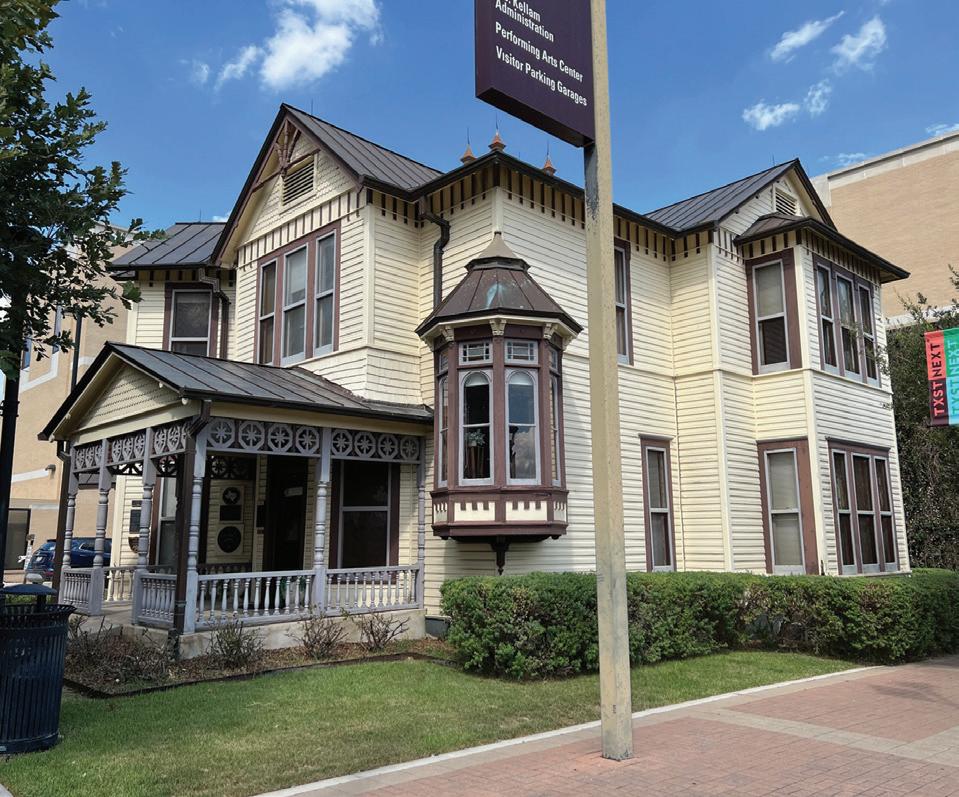
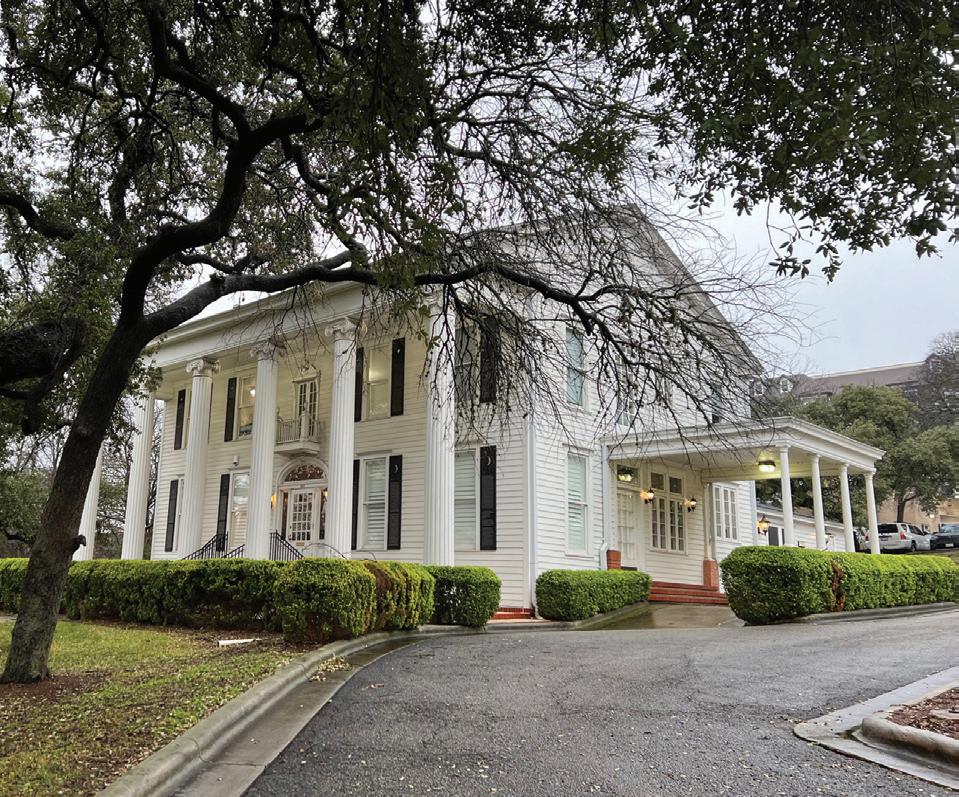
Undertake a feasibility study and launch a capital campaign. Preservation Texas will take the important step of launching our first capital campaign to invest in professional staff and facilities while building a permanent endowment to ensure that we can deliver on our mission long into the future.
Full-time staff based in San Marcos will include a Director of Development, a Director of Finance and Operations, and supporting positions to oversee membership programs, grant writing, communications, accounting, and human resources.
All preservation is local, and Preservation Texas recognizes that we need to have professional staff positioned across the state in order to be as effective and responsive as possible. By establishing regional offices with field officers in strategic locations, our regional staff will be able to work directly with property owners, organizations, and local governments. We will also be able to tailor training programs, endangered properties advocacy, and heritage tourism initiatives to the regions and communities being served.
• Hosting Regional Preservation Summits to support grassroots preservationists in 2023 in North Central Texas (Mineral Wells), Northeast Texas (Tyler), Central Texas (San Marcos), and Southeast Texas (Beaumont).
• Designing and publishing region-specific booklets to provide useful information about preservation programs, incentives, and resources tailored to Central, Northeast, North Central, Southeast, and West Texas.
• Securing $750,000 from the National Park Service to provide grants to endangered rural African-American historic places, primarily in Northeast Texas, to meet specific needs identified through local preservation networks.

The Board of Directors will support this Strategic Direction through a Regional Programs Committee that will oversee our regional office network and related initiatives to protect endangered places, plan and execute regional summits, tours, events, and training programs, and to foster a strong presence and impact across urban and rural communities. This committee will also receive input from a diverse cross-section of local preservationists who will participate in Regional Advisory Councils.
Open the West Texas Heritage Center in El Paso as a model for other regions. Funded through the generous support of El Paso County, the Center will operate six days a week, with permanent and changing exhibits on historic and cultural resources in El Paso County. It will serve as a hub for preservation information and historic property research, and as the starting point for offering walking tours to spotlight the historic resources of El Paso. The Center will also produce a Field Guide to Historic El Paso County, organize hands-on training programs in adobe building preservation, and advocate for preservation in West Texas.

Establish a statewide historic preservation easement program. A voluntary preservation easement program will enable private property owners to protect their National Register-listed properties in perpetuity and take advantage of valuable federal income tax incentives. This is a particularly important tool in areas that are not protected by local preservation ordinances.
Refocus the Most Endangered Places List to spotlight buildings that have already been designated as Recorded Texas Historic Landmarks or listed on the National Register of Historic Places. Many of these places have the opportunity to take advantage of state and federal tax incentives, including voluntary conservation easements. Additionally, advocacy for state tax incentives can be reinforced by calling the attention of state and local leaders to the condition of buildings that already have state and federal designation.
Develop a Master Preservationist Program. Modeled on the Master Naturalist program, Preservation Texas will train community volunteers to support sound stewardship of historic places through a statewide training network. A statewide preservation curriculum can be tailored to regional and local topics, and will include preservation history and philosophy, architectural history, archaeology, cultural landscapes, cemeteries, preservation planning and regulation, building interpretation, and project management, among other topics. Master Preservationists will be an army of volunteers at historic sites, on historical commissions, and as local preservation advocates.
A San Marcos-based Director of Regional Programs will oversee Regional Program Managers based in at least seven regions: Central, North Central, Northeast, Panhandle/Plains, South, Southeast, and West Texas. Field officers throughout Texas will support regional work, as well as headquarters staff to oversee our endangered places program, preservation training initiatives, and regional events.
Preservation Texas will establish sustainable revenue streams to enhance our capacity to provide meaningful programs by directly engaging in preservation planning, training, real estate acquisition and development, and retail opportunities that will expand our reach and impact. While memberships, sponsorships, and grants will remain key sources of revenue, they are not enough to support our statewide mandate. As our professional staff grows, its expertise across a range of preservation fields will be leveraged to adopt an affordable, competitive fee-for-service model.
• Completion of a feasibility study in 2020 for the establishment of a revolving fund. With the support of the 1772 Foundation, the study provided recommendations for the development of a program to invest in and protect important architectural resources.
• Acquisition of the endangered 1939 Linden Fire Station for rehabilitation as an income-producing rental property, ensuring that the building is saved and providing a revenue stream for its maintenance.
• Ser ving as a fiscal sponsor for the reconstruction of the Dickey Museum and Multipurpose Center in Taylor, lending our expertise and strong track record of sound grants management to ensure that the St. David's Foundation's grant of $500,000 will be carefully stewarded and that the project will be successfully completed.

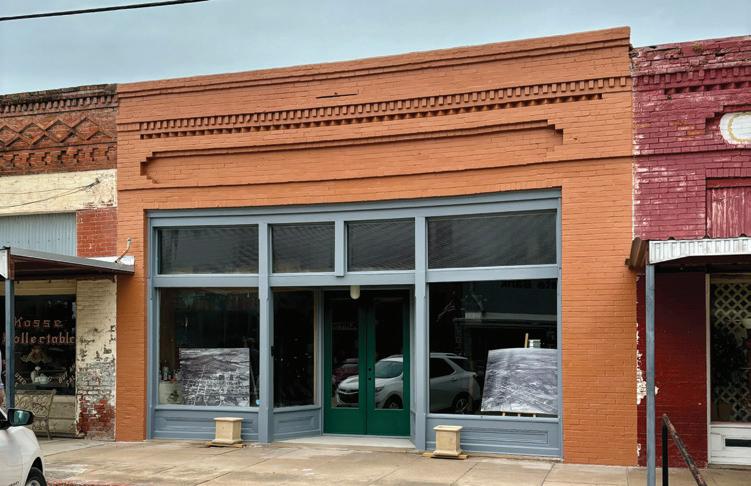
Preservation Texas's Board of Directors will support this strategic direction through two committees. The Real Estate Committee will provide oversight of our revolving fund, easements, and fee-for-service programs, while setting appropriate policies for property acquisition, development, maintenance, and rental. The Retail Committee will create and manage preservation-related product development and publications to promote awareness and generate revenue to support our mission.
Establish a fund to invest in at-risk historic places. These properties can be acquired, protected with conservation easements, and either sold to preservation-minded buyers or maintained as income-producing assets to secure the long-term financial health of Preservation Texas. Community-focused investments will have an additive benefit by stimulating additional public and private restoration efforts in the neighborhoods where we invest our resources.

Provide professional preservation services for an affordable fee. Access to state and federal preservation incentives is a challenge for Texans managing small-scale projects, particularly in rural areas without access to preservation expertise, and for nonprofit organizations that lack the capacity to secure National Register designation and to absorb the costs related to historic tax credits. An affordable fee-for-service model will enable Preservation Texas to undertake this work, making use of professional staff specializing in these areas statewide.
Establish hands-on training programs in preservation. The development of well-trained preservation craftsmen will make it possible for more property owners to choose preservation rather than replacement of historic building materials. Regular training programs in partnership with community and technical colleges will expand opportunities for the development of preservation businesses. Preservation Texas-owned historic properties, including the Center for Heritage Education at Bassett Farms Conservancy, can be used as teaching resources for the preservation trades.
Develop a range of retail products that will bring the appeal of Texas's architectural and cultural heritage to a wider audience. A variety of products, including historic reproductions, will be most appealing if produced in Texas by Texas artisans. In this way, traditional crafts such as furniture, stoneware, and textile production can be brought to market through Preservation Texas's membership networks, social media, and historic sites, as well as more traditional retail outlets. The publication of Preservation Texas books and monographs on historic preservation, architecture, and material culture will also make research and survey material more accessible and appealing, particularly if illustrated by the work of Texas photographers.
A Director of Real Estate will lead staff specialists in architecture, easements, tax credits, and property management, while a Director of Retail Programs will guide product development and publications staff to ensure that this strategic direction is professionally managed and successful statewide.
Preservation Texas plays an important role in the creation and interpretation of public policy at the local, state, and federal levels that impacts historic preservation. As a unifying voice for the preservation community, Preservation Texas is positioned to bring together disparate interests across the state who are united in the conviction that preservation of the built environment and cultural landscapes enhances our quality of life, sustains traditional building trades, supports local economies, and protects places of beauty and significance from permanent damage and destruction.
• Providing state legislative testimony and advocacy to allow nonprofit organizations to make use of the state preservation tax credit; to permit local historic commissions to continue to regulate building materials; and to prevent the narrowing of the definition of "historic" in the local designation process
• Writing letters of support and giving technical advice to local governments, such as recommending funding sources to the City of San Marcos to prepare a nomination for the endangered Dunbar Historic District to the National Register
• Partnering with El Paso County to develop a creative strategy that leverages historic preservation to support economic development and heritage tourism

Through our Public Policy Committee, members of the Board of Directors and preservationists from our general membership will develop and support impactful preservation policies at the federal, tribal, state, and local levels; ensure that the training opportunities we offer empower members, professionals in the field, and policy stakeholders with the knowledge needed to make preservation-friendly decisions; and that as many legal tools and incentives as possible are available to protect historic places.
Support the passage of a State Historic Preservation Act. State statutes and regulations impacting historic preservation are scattered throughout our state's Code of Laws, and reflect a decades-long patchwork of confusing amendments that need to be updated for the 21st century and streamlined to ensure predictable outcomes. To benefit as many Texans as possible, protecting historic state-owned buildings, enhancing preservation incentives for property owners, removing the Recorded Texas Historic Landmark designation process from the historic marker program, among other reforms, should be considered in order to enhance the effectiveness of our critically important state-managed preservation programs.
Provide preservation law and policy training. We have been entrusted with Historic Fort Worth's Historic Preservation Handbook for Texans: Laws and Incentives at the Local, State and Federal Levels, funded by the Texas Bar Foundation, which we will update regularly and make available online for our members. This Handbook will provide the basis for training programs that will also include content about new preservation policies and positive developments in the field.
Serve as a clearinghouse for local preservation policy information. Accurate, credible, and timely data about local preservation ordinances and programs is essential for effective public policy advocacy. We will develop systems to ensure that we can provide reliable information to policymakers at all levels so that changes to local, state, and federal regulations are based on facts and needs, not anecdotes. Comparative data about local preservation program budgets, regulations, and incentives will also empower local advocates working to strengthen preservation programs in their communities.



Preservation Texas's professional staff will be led by a Director of Public Policy, supported by specialists in state, federal, and local issues, both urban and rural, as well as an outreach manager to coordinate public policy training opportunities statewide.
Preservation Texas's charter has always empowered us to acquire, restore, and present historic buildings, artifacts, and documents to the public. In 2011, with the gift of Bassett Farms, we began to realize this aspect of our founders' vision. As we look toward 2036, we recognize that many volunteer-driven organizations across the state will struggle to maintain the historic buildings and collections that they have assembled over many decades. We will establish a system to identify significant historic resources to acquire from local groups for permanent stewardship to ensure that they survive. Through our professional staff, supported by regional and statewide networks, we will provide more efficient and sustainable management of historic places and collections that could otherwise not be met. These places can also provide remarkable opportunities for hands-on preservation training, research, interpretation, heritage tourism, and sustainable revenue.
• Completion of a Cultural Landscape Report for the core acreage of our Bassett Farms Conservancy property in Limestone County, which will serve as a model for completing similar reports for other Preservation Texas properties throughout the state in the future.
• Restoration of the exterior of the 1875 Bassett House and two late 19th century outbuildings at a cost of $900,000, ensuring that the oldest brick house in Limestone County will survive for generations to come.
• Acquisition of the former Kosse City Hall for redevelopment as a Heritage Education Classroom and Visitor Center for Bassett Farms Conservancy.
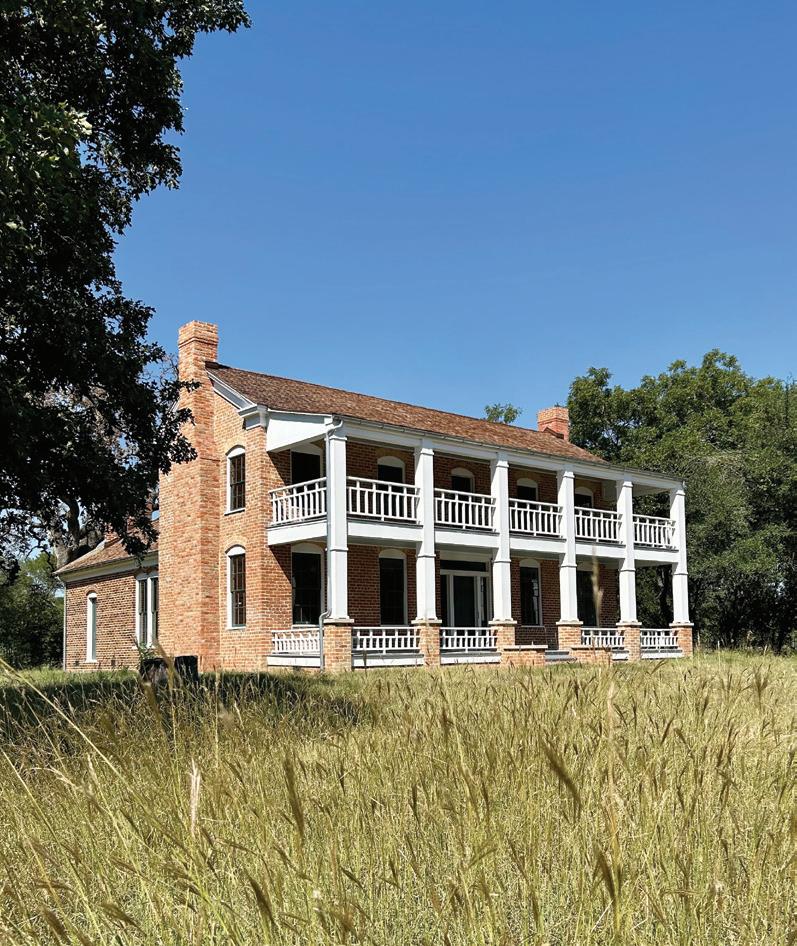
The Board of Directors will support this strategic direction through a Historic Resources Stewardship Committee, which will ensure that the architectural, historical, and cultural landscape aspects of the organization's historic sites are appropriately preserved, interpreted, and presented.
Prepare a Strategic Business Plan for the development of a Center for Heritage Education at Bassett Farms Conservancy. Programs will focus on late 19th century African-American freedom colonies, early 20th century tenant farming, and best practices in the stewardship of largescale cultural landscapes. Hiking trails will be developed to increase access to the 2,400-acre property, and threatened historic buildings will be relocated to the Center to provide lodging for guests. On-site preservation training programs and residencies will provide unmatched opportunities for hands-on preservation trades education, archaeology, and best practices in preservation.
Develop a Historic Site Affiliate Program. Many significant nonprofit and local government-owned historic properties lack professional staff, are infrequently open, and are unknown to most Texans. The development of a Historic Site Affiliate Program will support a collaborative network, providing sites with greater access to preservation planning resources, technical assistance, and marketing tools. Long-term property leases, management agreements, and property transfers will also be possible through the program.
Create a Center for Texana Studies in Huntsville that will serve as a leading resource for studying and interpreting the material culture and folk arts of Texas. Building a comprehensive collection of material culture and folk arts for scholarly study will provide unparalleled educational opportunities. Temporary on-site exhibits can travel throughout the state to increase appreciation for Texas's history. A comprehensive research library will support the Center, covering the broadest possible spectrum of topics related to Texas, as well as historic preservation, architecture, and the decorative arts. The Center will propel the historic material culture and folk arts of Texas to their rightful place at the national level.
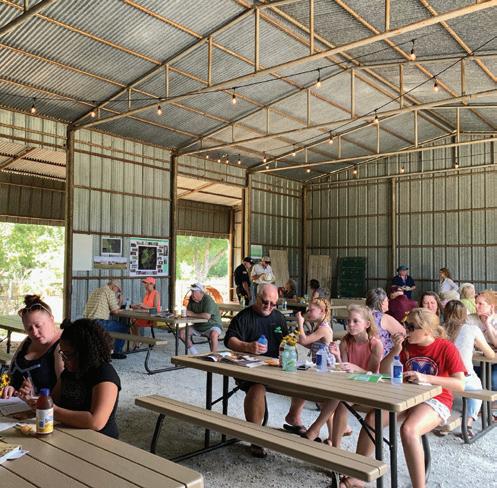


A Director of Historic Properties and Research will oversee our historic sites and collections, supported by local site managers. In addition, an architectural historian, collections manager, librarian/archivist, and archaeologist will ensure that these sites will be stewarded to the highest possible standards.
2036: Texas Bicentennial
2035: Preservation Texas's 50th anniversary
2024: Hired first Architectural Programs Manager
2023: Hired first Northeast Texas Program Officer; launched strategic visioning project
2022: Acquired former Kosse City Hall and Linden Fire Station for rehabilitation; completed Cultural Landscape report for a portion of Bassett Farms Conservancy; hired first Central Texas Program Officer
2021: Completed exterior restoration of the Bassett House and outbuildings; awarded $750,000 National Park Service grant to launch the Texas Rural African-American Heritage Grants Program
2019: Protected the right of historic communities to regulate building materials
2017: Defeated legislative attempt to restrict local landmarking
2015: Supported the expansion of state tax credit to nonprofits
2014: 10th anniversary of the Most Endangered Places List Program
2011: Bassett Farms Conservancy donated to Preservation Texas
2008: Held first statewide Preservation Summit in Austin
2004: Established the Texas’s Most Endangered Places List program
2006: Awarded the Texas Society of Architects Citation of Honor
2001: Created the Endangered Properties Program; launched first Preservation Texas website
2000: Preservation Texas staff expanded to two full time employees
1999: Advocated for the creation of the Texas Historic Courthouse Preservation Program
1998: Opened first office in Austin; commissioned an educational exhibit on Texas Courthouses
1995: First Executive Director hired
1989: Inagural Preservation Texas Honor Awards presented
1988: Preservation Texas Alliance, a public policy advocacy group, created
1987: First Preservation Day advocacy event held at the State Capitol
1985: Preservation Texas chartered to serve as an auxiliary to all agencies in the state of Texas concerned with its history and heritage and to disseminate knowledge of the history, prehistory, heritage, and culture of Texas
2024 BOARD OF DIRECTORS
Officers
Willis Winters, President, Mineral Wells
Sue Lazara, Vice President, Linden
Ron Siebler, Treasurer, Dallas
Charlene Orr, Secretary, Kaufman
Directors
Derrick Birdsall, Huntsville
Max Grossman, El Paso
Dixie Hoover, Hawley
Kate Johnson, Kyle
Serena Putegnat, Brownsville
Jose Rodriguez, El Paso STAFF
Evan Thompson, Executive Director, San Marcos
Conor Herterich, Northeast
Texas Program Officer & Endangered Properties Manager, Tyler
Samantha Hunick, Programs Coordinator, San Marcos
Jesus Najar, Architectural Programs Manager & Central Texas Program Officer, San Marcos
STRATEGIC PLANNING CONSULTANT
Candace Tangorra Matelic, Ph.D., CTM Professional Services, Fort Worth

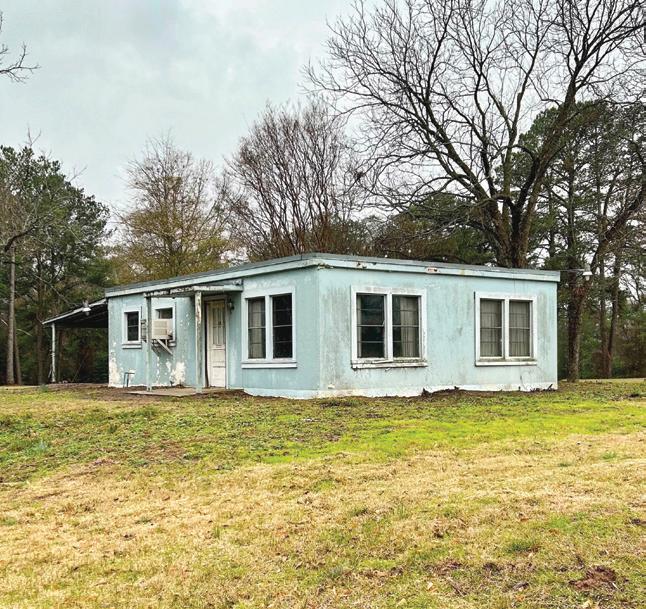



Rev. 06/24





